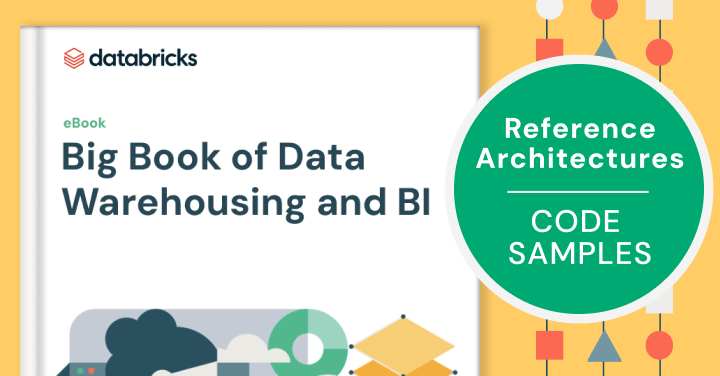Cloud Data Warehouses

In today’s data-driven business landscape, organizations constantly seek ways to store, manage and analyze vast amounts of information efficiently. As data volumes grow exponentially, traditional on-premises data warehouses are struggling to keep up with the demands on modern analytics and business intelligence. Cloud data warehouses are a revolutionary approach to data management that promises scalability, flexibility and cost-effectiveness. This guide will explore the world of cloud data warehouses, their benefits, challenges and why they’re becoming an essential tool for businesses of all sizes.
What is a cloud data warehouse?
A cloud data warehouse is a centralized repository of structured and semi-structured data hosted on cloud infrastructure. It serves as the heart of a modern analytics system, enabling businesses to store, process and analyze large volumes of data from various sources. Unlike traditional on-premises data warehouses, cloud-based solutions leverage the power of cloud computing to offer enhanced scalability, performance and accessibility.
Cloud data warehouses are designed to handle complex analytical queries and support business intelligence activities. They allow organizations to consolidate data from multiple sources, including transactional systems, databases, applications and external data providers. By centralizing this information in the cloud, businesses can gain valuable insights, make data-driven decisions and respond quickly to changing market conditions.
Here’s more to explore
How does a cloud-based data warehouse differ from an on-premises data warehouse?
The shift from on-premises to cloud-based data warehouses represents a significant evolution in data management practices:
Infrastructure: On-premises data warehouses require physical hardware and infrastructure maintained by an organization’s IT team. Cloud data warehouses, on the other hand, are hosted and managed by cloud service providers, eliminating the need for in-house hardware management.
Scalability: Traditional data warehouses have limited scalability, often requiring hardware upgrades to accommodate growing data volumes. Cloud solutions offer virtually unlimited scalability, allowing organizations to easily adjust their storage and compute resources as needed. Cloud data warehouses can also use serverless techniques for instant startup, and to scale down quickly.
Cost structure: On-premises solutions involve significant up-front capital for hardware and software licenses, as well as ongoing maintenance costs. Cloud data warehouses typically follow a pay-as-you-go model, reducing initial investments and allowing for more flexible cost management. Cloud data warehouses can also use serverless techniques to simplify billing and lower total costs.
Maintenance and updates: With on-premises systems, organizations are responsible for maintaining and updating their hardware and software. Cloud providers handle these tasks automatically, ensuring that users always have access to the latest features and security patches.
Accessibility: Cloud data warehouses can be accessed from anywhere with an internet connection, facilitating remote work and collaboration. On-premises systems often require VPN access or physical presence at the data center.
Performance: Cloud data warehouses leverage distributed computing and advanced technologies like columnar storage and massively parallel processing (MPP) to deliver superior query performance, especially for large-scale analytics workloads. Cloud data warehouses also use machine learning–powered optimizations to make your point lookups faster and cheaper, and to make data updates/deletes blazing-fast.
Understanding the architectural differences between a cloud data warehouse and an on-premises data warehouse
The primary architectural difference between a cloud data warehouse and an on-premises data warehouse is that a cloud data warehouse leverages a distributed, scalable cloud infrastructure where compute and storage are often separated, allowing for dynamic resource allocation based on demand, while an on-premises data warehouse relied on dedicated hardware within a company’s data center, requiring up-front investment in physical infrastructure and limited scalability without significant hardware upgrades; essentially, cloud data warehouses offer flexible, pay-as-you-go access to computing power, while on-premises systems require managing and maintaining dedicated hardware onsite.
Key features of cloud data warehousing
Cloud data warehouses offer several key features that set them apart from traditional solutions:
Administration and patching: Cloud providers handle most administrative tasks, including software updates, security patches and infrastructure maintenance. This reduces the burden on IT teams and ensures that the system is always up to date.
Scalability: Cloud data warehouses can easily scale to accommodate changing data volumes and workloads. This elasticity allows businesses to pay only for the resources they need, when they need them.
Accessibility: Data can be accessed from anywhere with an internet connection, enabling remote work and collaboration across geographically dispersed teams.
Security and compliance: Cloud providers offer robust security features, including encryption, access controls and compliance certifications. Many cloud data warehouses meet stringent regulatory requirements for data protection and privacy.
Separation of compute and storage: This architectural feature allows organizations to scale compute and storage resources independently, optimizing costs and performance based on specific workload requirements.
The benefits of cloud data warehouses
Cloud data warehouses offer numerous advantages over traditional on-premises solutions, including:
Flexibility: Cloud data warehouses can easily adapt to changing business needs, allowing organizations to quickly spin up new analytics projects or adjust resources as required.
Security: Despite initial concerns about cloud security, many cloud data warehouses now offer enterprise-grade security features that often surpass those of on-premises systems. These include encryption at rest and in transit, fine-grained access controls and regular security audits.
Performance: Advanced technologies like MPP and columnar storage enable cloud data warehouses to deliver superior query performance, especially for complex analytical workloads.
Cost: The pay-as-you-go model of cloud data warehouses can significantly reduce the total cost of ownership compared with on-premises solutions. Organizations can avoid large up-front investments and only pay for the resources they actually use.
Scalability: Cloud data warehouses can easily scale to handle growing data volumes and user concurrency without the need for hardware upgrades or complex capacity planning.
AI and machine learning integration: Many cloud data warehouses offer built-in AI and machine learning capabilities, allowing organizations to leverage advanced analytics directly within their data warehouse environment.
Data sharing and marketplaces: Some cloud data warehouses facilitate secure data sharing between organizations and offer data marketplaces, enabling businesses to monetize their data assets or access third-party datasets for enriched analytics.
The challenges to successful cloud data warehousing
While cloud data warehouses offer numerous benefits, organizations may face several challenges when implementing and managing these solutions:
Integration and migration: Moving data from legacy systems to the cloud can be complex and time-consuming. Organizations need to carefully plan their migration strategy and ensure that existing data pipelines and applications are compatible with the new cloud environment.
Vendor lock-in: Some cloud data warehouse solutions use proprietary technologies or formats, which can make it difficult to switch providers or move data back on-premises if needed. Organizations should consider portability and interoperability when selecting a cloud data warehouse solution.
Governance: As data becomes more distributed across cloud environments, maintaining consistent data governance policies and practices can be challenging. Organizations need to implement robust data governance frameworks that span both on-premises and cloud environments.
Compliance: While cloud providers offer various compliance certifications, organizations in highly regulated industries may face additional challenges in ensuring that their cloud data warehouse meets all applicable regulatory requirements.
Network issues: Cloud data warehouses rely on internet connectivity for data transfer and access. Poor network performance or outages can impact data ingestion and query performance. Organizations should consider implementing redundant network connections and optimizing their network architecture for cloud access.
Multicloud or single cloud: Organizations must decide whether to adopt a multicloud strategy or rely on a single cloud provider for their data warehousing needs. While a multicloud approach can provide greater flexibility and avoid vendor lock-in, it may also increase complexity and management overhead.
Conclusion
Cloud data warehouses represent a significant leap forward in data management and analytics capabilities. By offering unparalleled scalability, performance and cost-effectiveness, these solutions enable organizations of all sizes to harness the power of their data for competitive advantage. As businesses continue to generate and collect ever-increasing volumes of data, cloud data warehouses will play a crucial role in driving innovation, improving decision-making and unlocking new insights.
While challenges exist in implementing and managing cloud data warehouses, the benefits far outweigh the drawbacks for most organizations. As technology continues to evolve and mature, we can expect to see even more advanced features and capabilities that will further transform the way businesses store, process and analyze their data.
For organizations considering a move to the cloud, it’s essential to carefully evaluate different cloud data warehouse solutions, assess their specific requirements and develop a comprehensive migration strategy. By doing so, businesses can position themselves to take full advantage of the power and flexibility offered by cloud data warehouses, setting the stage for data-driven success in the years ahead.


